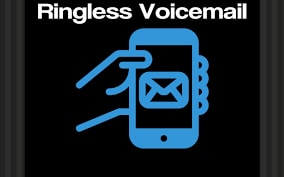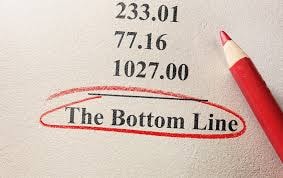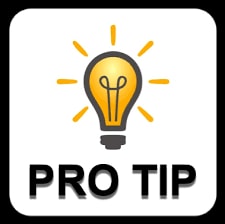The RVM Gold Rush & The Cold, Hard Truth
So, You’re Thinking About RVM? Read This Before You Blow Yourself Up
Listen up — running wholesale real estate like a real hustle means you’ve got to know where the landmines are buried. Ringless voicemail (RVM) looks shiny, but it’s a legal grenade with the pin halfway pulled. Depending on your state you may need to talk to your attorney or walk in safer pastures.
Lets put this in laymans terms:

So, You’re Thinking About RVM? A Quick Heads-Up (format and layout)
Before we dive in, let’s get one thing straight: using ringless voicemail (RVM) to chase deals is walking through a legal minefield. What’s supposedly legal in one place could land you a massive fine in another, so you absolutely have to do your own homework. This is not legal advice; it’s a breakdown of the good, the bad, and the ugly. It is 100% your responsibility to consult a lawyer and ensure you’re not breaking the law.
What’s “OK” in one zip code could get you smacked with fines in another. I’m not your real estate agent, I’m not your lawyer — but I am telling you this: it’s your job to do the due diligence before blasting out messages. The real estate industry doesn’t care if you “didn’t know.” They’ll still come for your money.
What the Hell is RVM, Anyway?

RVM is that sneaky little tech that lets you dump a pre-recorded pitch into someone’s voicemail without their phone ringing. The property owners just see a missed call, then bam — a new message.
Some call it “sly dial,” but don’t be fooled — this isn’t cute. You can hit thousands of homeowners in seconds. With the right services, you can make contact lists big enough to drown in, pulling phone numbers from every county court record and market list you can find.
The “Shiny Object” Syndrome: Why Wholesalers Drool Over RVM

When the RVM craze hit, real estate investors jumped in like kids chasing an ice cream truck. Why? Low cost. We’re talking pennies per contact compared to most direct marketing.
It’s scalable — push one button, hit a massive audience, maybe even outsource the whole thing to a VA while you chase good deals. Sounds slick… until you realize cheap marketing can become the most expensive mistake of your career.
How an RVM Blast Actually Works
Step one: you need a monster list of motivated sellers — not 200 names, but tens of thousands. Pull them from county tax records, find distressed property owners, or dig into the MLS for expired listings.
Step two: skip trace that list to lock down accurate phone numbers. Services like Batch Skip Tracing and Easy Button REI will take your investment in data and crank out numbers like a factory.
Step three: upload it to your RVM platform, record your message, and let it rip. If you’re smart, you test the process before going full blast — because once it’s out there, you can’t reel it back in.
The Legal Minefield and Red Flags

The Script: What the Hell Are You Supposed to Say?
If you’re gonna use RVM (and I’m not saying you should), your pitch better not sound like a corporate real estate agent reading from a manual. Keep it short, sound human, and don’t drop your whole life story.
Example: “Hey, this is Mike. I’m buying distressed property in the area. If you’re thinking about selling your house, call me back at 555-123-4567.”
See what happened there? It sounds personal, makes the seller feel like you actually called, and sets up the conversation. Don’t overshare. The less you give out, the harder it is for the wrong investors (lawyers) to track you down later.
The Dark Side: Why RVM Pisses People Off

Here’s the reality — nobody wakes up hoping for a voicemail from a stranger looking to talk real estate wholesale or pitch them on a real estate investing idea. They see that missed call and voicemail pop up out of nowhere, and they already feel played.
Robocalls, including RVM drops, are one of the top complaints to the FTC. We’re talking billions of calls every month. If you think that’s gonna make buyers trust you with their investment properties, you’re dreaming.
The Legal Hammer: Don’t Mess with the Feds

The TCPA is the big, bad watchdog of marketing calls. And when you drop RVMs without permission, you’re stepping on its tail. The FCC and FTC are not playing games — fines can be brutal.
Some RVM services will swear they’re “compliant” because the phone doesn’t ring. Guess what? Phones still ring sometimes, and when they do, your legal defense just went down in flames. If you’re trying to buy or sell houses, the process needs to stay clean.
The $10,000-Per-Call Nightmare

Under the latest laws, you could get smacked with fines up to ten grand per illegal call. And that’s before you even think about private lawsuits.
There are “professional litigators” out there hunting robocallers for sport. They grab your number from a voicemail, file a complaint, and collect $1,500 per drop. Do that math. Even one hit can wipe out the money from a great deal, and a string of them could take your business down completely.
Red Flag #1: The Do Not Call List

Think you can just ignore the DNC list? Nope. That’s the fastest way to get roasted by regulators. You’re legally required to scrub every contact list before sending a campaign.
Even if your property owners aren’t on the DNC, you can still get fined for the robocall itself. That’s like paying for direct marketing and ending up with a foreclosure — a complete loss.
The Excuses, The Loopholes, and The Reality
Red Flag #2: Using Fake Names and Burner Numbers
If you have to hide who you are to do business, you’re not running a real estate wholesale operation — you’re running from something. And if you’re trying to land cash buyers or work with legit real estate investors, that’s a quick way to lose trust.
Burner numbers might seem smart, but when the property owners you hit start comparing notes, your cover blows faster than a bad flip. Keep it clean if you actually want deal flow and long-term investment properties coming your way.
Red Flag #3: Professional Litigators Are Hunting You
These aren’t the motivated sellers you’re looking for — these are professional troublemakers. They check their voicemails like it’s a full-time business, log every illegal drop, and hand it to their lawyers.
If you think you can find distressed properties and sneak past the legal radar, think again. There’s a reason seasoned investors avoid playing chicken with the FTC — one wrong call and you’re paying them instead of closing good deals.
The “I’m Not Selling, I’m Buying” Bullsh*t Excuse
Some wholesalers try to say, “I’m not selling anything, I just want to buy your house.” Cute. But the FCC sees that as telemarketing, period.
When you’re calling distressed property owners without permission, it’s the same in their eyes as pitching a product. And if your investment strategies rely on bending definitions, you’re asking for fines.
So, Is There Any “Right” Way to Use RVM?
If you’re dead-set on trying it, the only “safer” play is sending it to people who’ve already opted in. That means they filled out your form, gave you phone numbers, and agreed to be contacted about real estate deals.
Even then, I’d rather focus my direct marketing muscle on channels that can’t get me hit with a $10k fine. Cash buyers, a seller wanting to leave, and distressed homeowners are out there — you just need a cleaner way to reach them.
The “Compliant” Playbook: A Different Way to Use RVM
Using RVM for Lead Nurturing, Not Just Hunting
If you’re in wholesale real estate for the long haul, you’ve gotta stop chasing every cold property lead like it’s your last meal. The smart play is to use RVM on the people who already know you — your warm cash buyers, a distressed property, and past real estate deals.
That way, you’re not dropping voicemails into strangers’ inboxes; you’re following up with buyers who’ve opted in, homeowners you’ve met, or investors you’ve closed with before.
Scenario 1: The Instant Follow-Up for Seller Leads
Picture this — a seller fills out your web form asking for a cash offer. Before they check out your competition, you hit them with an RVM:
“Hey, we got your info, we’re working on your market value offer, and we’ll call you soon.”
That tiny touch keeps you top of mind, locks them in, and makes it harder for another real estate investor to swoop in and purchase their distressed property.
Scenario 2: Re-Engaging Old, Cold Leads
Some leads need time to marinate. Maybe they weren’t ready to sell months ago. Maybe they were holding out for a great deal or a better sale price.
Drop them an RVM every month or so: “Still looking to buy your house — call if you’re ready to talk numbers.”
If you’re smart, you’ll remind them you’re ready to move fast, pay cash, and close on investment properties in as-is condition.
Scenario 3: Blasting Your Cash Buyers & Tenant Lists
This one’s a no-brainer for any wholesale real estate pro. Got a hot property under contract? Let your cash buyers know before it hits the MLS.
Your RVM could be as simple as: “New deal — 3/2 in a good rental area, priced under market value. Call if you’re interested.”
The same applies if you’ve got distressed homes you want to move quickly. Your best buyers will appreciate the heads-up, and you’ll move your inventory faster.
Real Talk from the Trenches
But Let’s Be Real: Does This Crap Actually Work?
Yeah, it works… sometimes. I’ve seen real estate investors land five-figure paydays off one campaign.
I’ve also seen people blow months of work chasing distressed property owners who ghost them after the first callback.
The problem is, every RVM drop is a roll of the dice. If you’ve got multiple properties and a solid investment pipeline, you can risk experimenting. But if this is your first step into wholesale real estate, you’re better off protecting your time and money with safer plays.
Technical Glitches: The “Ringless” Promise Can Be a Lie
RVM isn’t bulletproof. Phones still ring sometimes — and when they do, your “ringless” defense evaporates. Imagine trying to buy a distressed property and getting slapped with a fine before you even get a chance to purchase it.
That’s why I tell clients in this game — don’t let the tech fool you. If your process relies on a glitch staying hidden, you’re playing with fire.
Handling the Blowback: How to Filter Out the Haters
When it comes to wholesale real estate, if you answer every callback live, you’re setting yourself up for pain. The first people to call back are often the most pissed — they’re not interested in selling, they’re interested in yelling.
Route those to a voicemail that weeds out the noise. Give your real buyers and cash buyers a lane to talk transaction and your angry homeowners an easy way to opt out. Saves your sanity and keeps your business moving.
The RVM Target Audience: Who Actually Responds?
You’re not usually talking to savvy real estate investors here. More often it’s older homeowners, folks without smartphones, or people who still check voicemail like it’s 2005.
Sometimes that works in your favor — they may own distressed homes free and clear, making them a perfect right property for a flip or rental. But don’t expect them to jump just because you called. You still need due diligence to make sure it’s a win win deal.
The Looming Threat: RVM’s Limited Shelf Life
Even if you’re closing deals now, this tactic won’t last forever. Phone carriers are getting better at blocking RVM drops, and some states are tightening rules.
If you don’t have a backup strategy — like direct marketing, targeted outreach to property owners, or a killer sale follow-up process — you’re setting yourself up for a hard crash. Have access to multiple channels and keep your marketing game up to date, or you’ll get left behind.
The Alternative Playbook & The Final Verdict
The Alternative: When RVM Isn’t Worth the Squeeze
Look, there’s more than one way to run wholesale real estate without dancing on a legal tripwire. You don’t have to blast cold property owners just to find motivated sellers.
Sure, RVM might be low cost, but it’s also time consuming cleaning up the legal mess when something backfires. Why not focus on channels that let you buy and sell without sweating over transactions blowing up in court?
Why Old-School Direct Mail is Making a Comeback
Direct mail has been the win win tool for smart real estate investors since before half these tech tools even existed. It’s slow, steady, and still moves distressed property and distressed homes better than most “instant” tricks.
With fewer people mailing, your buyers are more likely to notice your offer and respond. No FCC drama. No random account closure from a telecom carrier. Just deals you can track from first step to sale.
The Hard Numbers: Direct Mail ROI vs. RVM Risk
When you measure ROI, direct mail beats RVM in peace of mind alone. You can track every purchase, every sale, and every transaction.
Meanwhile, with RVM, one call to the wrong homeowners can tank your whole business. Even a great deal won’t cover a $10k fine. It’s math that doesn’t work — especially if your investment strategies are built on long-term growth.
Automating Your Mailings So You’re Not Licking Stamps

Automation isn’t just for RVM. You can set up direct marketing systems that target cash buyers, investors, and buyers looking for investment properties or right property flips.
The process works for multiple properties at once, keeps your services running on autopilot, and frees up your time to chase and close deals.
The Two Groups Reading This Right Now
If you’re already in wholesale real estate and feeling that gut check about RVM, listen to it. If you’ve been eyeballing it because you saw some loudmouth on social media bragging about a sale they made, step back.
The smart owner keeps the market value of their reputation in mind — and doesn’t trade it for a risky shortcut.
Your Final Action Plan: Mail ’Til Your Bank Account is Full
Step 1: Ditch the RVM Idea (Or Shut Down Your Current Campaign)
If you’re wasting time chasing cold voicemails, stop now. RVM is a magnet for trouble — especially if you’re hitting people behind on delinquent mortgage payments or knee-deep in foreclosure.
Sure, you might find distressed properties this way, but you can do the same with cleaner methods and still get top-notch real estate deals without worrying about fines or lawsuits.
Leave the risky stuff for the rookies who don’t care about keeping their business clean in this industry.
Step 2: Commit to a Proven, Sustainable Channel
Direct mail works because it lets you go after specific lists — like house owners with equity, expired listings, or people who just inherited property — and talk about their options to sell without cold-calling their dinner table.
You can highlight why a quick sale or purchase now beats waiting for the market to shift. And you can put access to your offer right in their hands, without needing them to answer a phone call they never wanted.
Whether it’s investment properties, fix-and-flips, or buy-and-hold rentals, you’ll attract cash buyers and distressed property owners who want to move now.
Step 3: Educate Yourself and Systematize Your Marketing
Don’t just jump from one tactic to another — build a process you can run without thinking. That means learning your market value numbers, understanding your target clients, and knowing the steps from first touch to close.
When you work with property owners the right way, you’ll build trust in the industry and stand out from competitors who cut corners.
The goal is simple — have access to a repeatable system that keeps bringing you more deals, whether you’re chasing foreclosure leads or off-market gems, without getting your name dragged into a courtroom.
The Bottom Line: Be Safe, Not Sorry

If you remember nothing else from this entire breakdown, remember this — the easiest way to blow up your wholesale real estate hustle is by chasing the wrong kind of lead the wrong way.
I’ve seen rookies get so caught up in “cheap” marketing that they forgot the goal — to find distressed properties, turn them into real estate deals, and build a business that spits out cash month after month.
You don’t need to burn bridges or play cat-and-mouse with regulators to make that happen. You need buyers who actually want what you’re selling and property owners who are ready to move on. That’s it.
You can get there with targeted lists, direct marketing, and building relationships in this industry the right way — not by leaving a trail of angry voicemails and legal landmines behind you.
The pros know the wholesale real estate game is about longevity. The more you control your process, the more more deals you’ll close without fear of a lawsuit. Skip the gimmicks, stack your wins, and keep your head down long enough to turn those small plays into great deals.
Because at the end of the day, the smart money isn’t chasing hype — it’s chasing distressed property owners with the cash to close and the trust to keep coming back.
Pro Tip Before You Go

Three simple words: Purchase distressed property.
Simple is not easy.
Your investment is cash buyers and you make money when you give them access to homes below market value.
If you really want to level up your wholesale real estate game, start building your network now. Get to know serious real estate investors who are actually closing, not just talking big online.
When you’ve got strong relationships with real estate cash buyers, every house you lock up becomes easier to move — and you can skip the panic marketing altogether.
The key? Play the long game. Focus on people who value clean deals, fair terms, and speed. When you bring quality to the table, the best real estate investors will keep coming back, and your pipeline will never run dry.